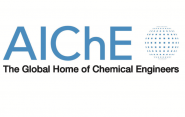Amir Haji-Akbari Wins AIChE COMSEF Young Investigator Award

For his work studying crystallization and ice nucleation, Amir Haji-Akbari has been honored by one of the premier organizations in chemical engineering.
 The American Institute of Chemical Engineers (AIChE) selected Haji-Akbari, assistant professor of chemical & environmental engineering, for its Young Investigator Award for Modeling and Simulation. It was presented to him Wednesday, Nov. 13 at the AIChE Computational Molecular Science and Engineering Forum (CoMSEF). Haji-Akbari also gave a talk about his research at the event.
The American Institute of Chemical Engineers (AIChE) selected Haji-Akbari, assistant professor of chemical & environmental engineering, for its Young Investigator Award for Modeling and Simulation. It was presented to him Wednesday, Nov. 13 at the AIChE Computational Molecular Science and Engineering Forum (CoMSEF). Haji-Akbari also gave a talk about his research at the event.
This award recognizes outstanding research in computational molecular science and engineering, encompassing both methods and applications. Nominees may hold positions in academia, industry, or a government lab, and must be within seven years of completion of their highest degree.
AIChE cited Haji-Akbari’s “pioneering contributions to developing and utilizing advanced sampling techniques to study crystallization, including colloidal self-assembly and ice nucleation.” Among other breakthroughs, Haji-Akbari demonstrated that self assembly based on shape can result in the formation of complex structures. And he developed a new method for studying crystal nucleation kinetics.
His work reconsidering a scientific method known as forward flux sampling has also been critical to the field. Forward flux sampling is used to measure the probability of a rare event. The method has gained popularity in recent years, but Haji-Akbari found that it makes certain assumptions that aren’t always accurate. For instance, it assumes that changes happen smoothly.
“So when you’re watching, say, molecular assimilation and you’re calculating it as a function of time, you don’t want it to change too much between successive time steps,” he said. “But it turns out that when you look at processes like crystallization, that is exactly what happens. You have these large changes - parameters jump widely between successive time steps - that make the existing method inaccurate. There was no right way of predicting kinetics using the existing method.”
The method that Haji-Akbari developed solved this problem, and he published it in the journal Chemical Physics. His lab and others have used it regularly since.

